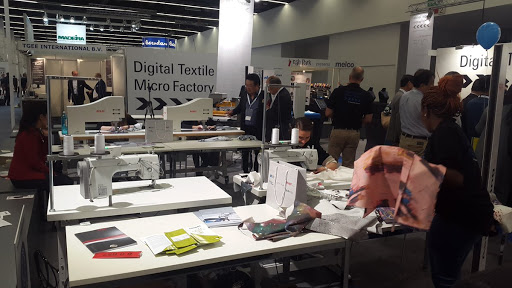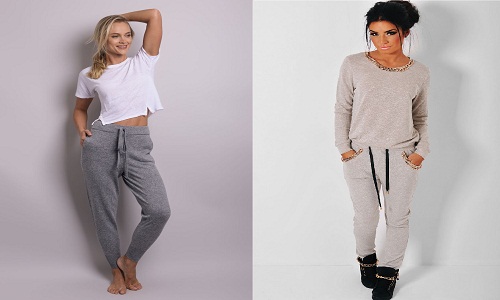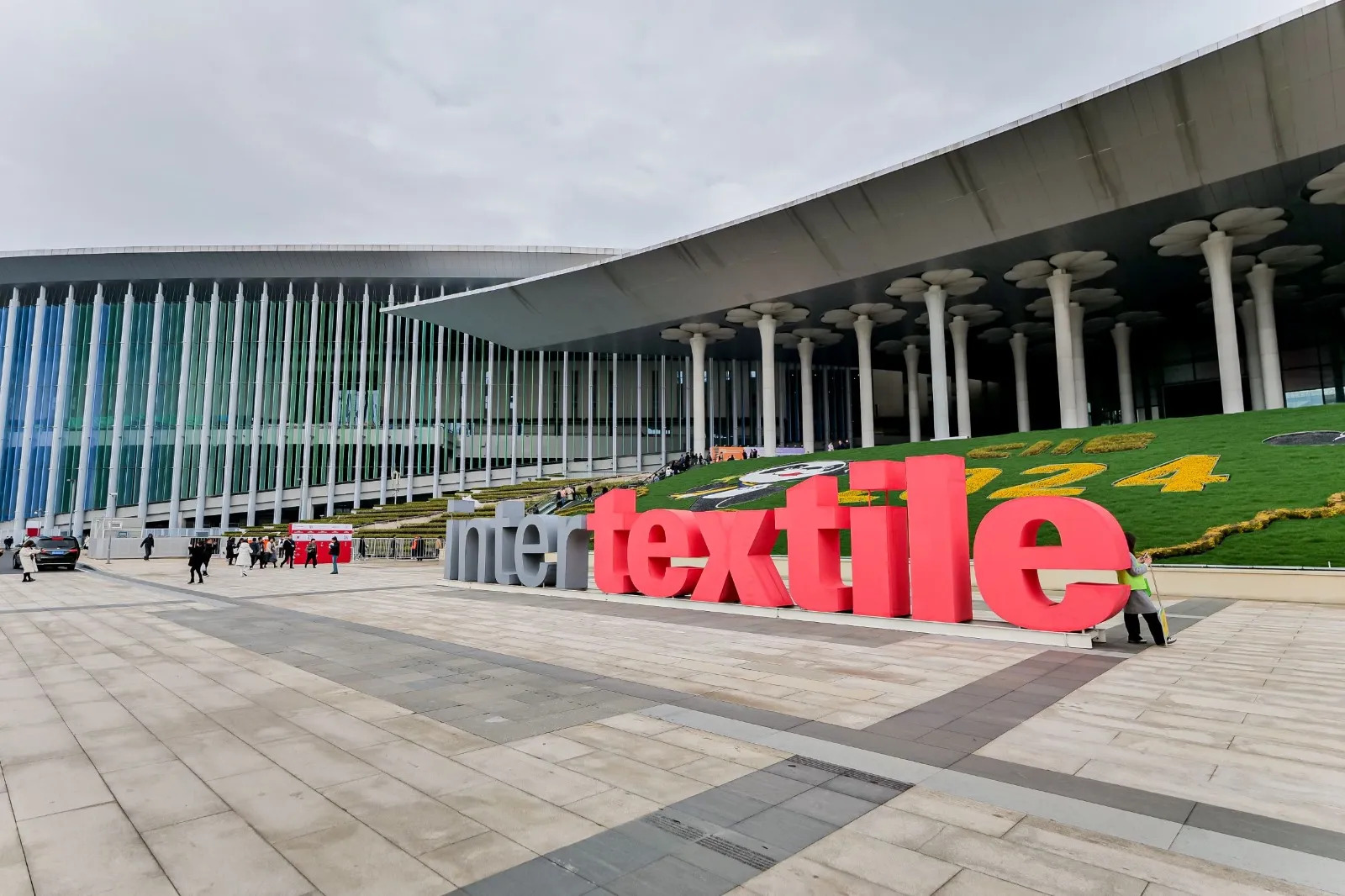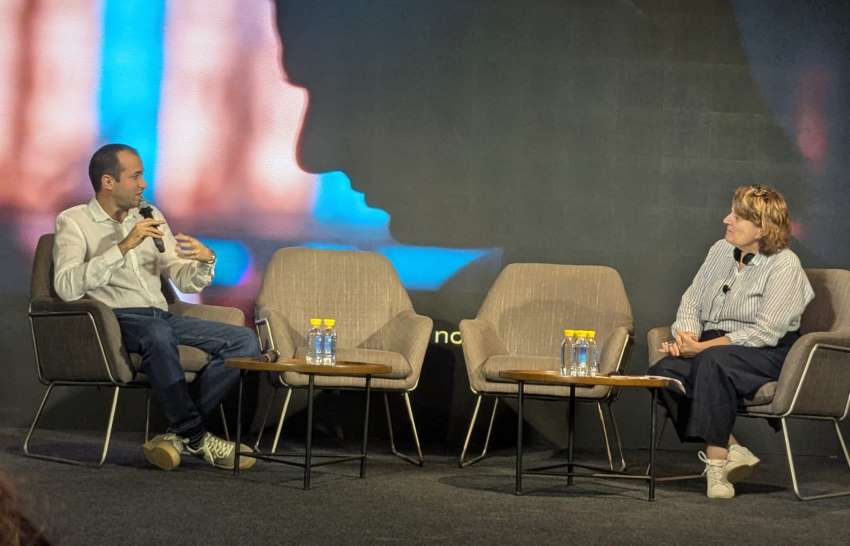FW
The 2nd edition of Gartex, India’s complete garment manufacturing solutions show would be held from July 29 to 31, 2017 at Pragati Maidan, New Delhi. First Gartex 2016 had received an overwhelming response from both exhibitors and visitors alike and succeeded in creating a useful platform for focused industry interaction and profitable business dealings.
Targeted visitors of Gartex include garment exporters, garment manufacturers, fashion designers, apparel industry professionals, home textile players, textile printing companies, sports and apparel manufacturers, buying houses among others who can directly profit from the huge industry turnout in a matter of just three days.
Hosting the industry’s most important players along with new and emerging companies, visitors are provided with immense business opportunities to explore the Indian garment textile market. Visitors can benefit from (a) face-to-face interactions with leading companies, (b) witness new product launches before they hit the market, (c) get hands-on experience of machinery and end products, (d) Find a comprehensive product showcase that meets every sourcing need and (5) Gain market knowledge through interactions on the show floor.
Gartex 2017 will cover 65,000 sq. ft. area and more than 150 companies from all across India and overseas are expected to participate. The show will incorporate Digitex- An exclusive show on digital textile printing technology. Gartex provides a platform for visitors from all over India to meet their sourcing goals from varied manufacturers, dealers, distributors and suppliers from different regions of India. The last edition saw visitors from over 140 cities find the right business opportunities at the 3-day show.
DyStar has bought three specialty chemical units of Emerald Performance Materials. The three units are Carolina Chemical, Hilton Davis, and Foam Control. DyStar will integrate all three specialty businesses and manufacturing sites into its US business platform. Emerald Performance Materials is a US company and a leading manufacturer and marketer of specialty chemicals for the consumer and industrial markets.
The acquisition will strengthen DyStar’s position as a specialty chemical manufacturer in the USA as well as build a diversified product portfolio to launch on its global platform. By combining the businesses, DyStar will add a broad range of products to its portfolio to service multi-national retail brands and consumer brands. This will provide a more balanced business in strategic segments ensuring the long term growth and profitability of DyStar.
Emerald produces and markets technologically advanced specialty chemicals for a broad range of consumer and industrial applications. Its products play a variety of roles in products that are consumed and used every day enabling them to last longer, look, smell, taste or perform better. Emerald products are used in aerospace, food, beverages, cosmetics, toothpaste, household products, paint, automobiles, sports gear and many other applications. Emerald has three business groups, six operations and approximately 700 employees.
A collection by Dutch designer and former Viktor & Rolf intern Anbasja Blanken featured luminescent denim inspired by the sea. So appealing was the winning collection at the Global Denim Awards (GDA) that it stole the spotlight without competition in Amsterdam. The collection was embellished with decadent fringe, laser cut prints, pearls, 3-D floral ornaments and embroidery woven with glow in the dark threads. For the competition, Blanken and ITV took on the challenge to create denim pieces that could light themselves.
The event’s sponsor e3 Cotton awarded Blanken with a prize of €10,000. The collection will be exhibited at Kingpins Shows in New York City and Hong Kong, before returning to Holland for Amsterdam Denim Days 2017.
GDA also honoured India-based Arvind Mill with the Best Fabric Award. The Khadi fabrics used in designer Roosmarijn Koster’s collection of bomber jackets and tracksuits were fully handspun and hand-woven in India. In this, Koster used only two colors: natural cotton and indigo.
Having fully recognized the significance of FTA with the European Union (EU) and the advantages it holds for India, the Ministry of Textiles is constantly in touch with the Ministry of Commerce for signing an FTA with the EU to boost trade especially in the textile sector. This was revealed by secretary, ministry of textiles, Rashmi Verma. Addressing industry leaders at Texcon 2016, a two-day international conference on textiles and apparel organised by the Confederation of Indian Industry (CII) in New Delhi, Verma revealed that while Bangladesh enjoys preferential treatment and tax benefits for textile exports, India has greater competitive advantage in terms of environmental compliances. As countries of the European Union attach huge importance to environmental compliances, India stands to gain over Bangladesh.
The Indian textile industry is at a turning point. While on one hand, China’s export growth in textiles is on the decline, India, which is riding on cost advantage, has its prominent role in international textile trade. India is also amongst a few selected countries that have the entire value chain within the country. Further, following the true spirit of federal competitiveness, several states are coming out with their own policy and incentives scheme for the textile sector. This augurs well with the aim to make India a leading global player in the textile sector. Roll-out of the GST would also greatly help in streamlining the tax structure and improve compliance, Verma added.
The secretary appealed to the industry to take full advantage of the special package announced by the government for the textile sector. She also pointed out that industry needs to increasingly focus on innovation, modernisation and technological advancement to become the world leader in the textile sector.
Bangladesh will host a Denim Expo from November 8 to 9, 2016. The event expects to see about 5,000 visitors, including buyers, brand representatives, CEOs, sourcing managers, manufacturers, merchandiser and denim lovers from the US, the UK, Germany, Italy, France, the Netherlands, Turkey, China and rest of the world.
The show will gather 55 exhibitors from 16 countries, who will present products of the entire denim supply chain, ranging from fabrics to finishes. Bangladesh Denim Expo will present natural fabrication, natural manufacturing of jeans and natural washes. The show’s trend area will display a series of trends and fits inspired by natural manufacturing techniques and fabrics.
The show, managed by a non-profit organization aiming at improving the denim culture in the country, will focus on spring/summer 2018 trends and will focus on the theme of natural denim, analyzing the themes of sustainability and innovation in the denim industry.
Four seminars will present opinions and experiences of international and national experts of the global denim supply chain. One of these seminars will be about how to choose less harmful denim washing techniques. Another seminar will focus on the improvement of the unit economics of the readymade garment manufacturing industry. A total of 4,000 visitors from 43 countries visited the earlier edition of Bangladesh Denim Expo held in April 2016.
Signaling the revival of textile and garments industry, Arvind has announced the sale of a 10 per cent stake in its brand business subsidiary, Arvind Lifestyles, at a valuation of Rs 7,400 crores last month. This move has renewed interest in the textile and garment industry. Even after a 19-per cent rally, the market capitalisation of Arvind, currently stands at around Rs 10,800 crore.
With this deal, Arvind could be one of the few exceptions when industrialists are shying away from making new investments. Arvind’s chairman, Sanjay Lalbhai said there is enormous potential for growth in India’s textiles sector which they were trying to tap through investment in technology, brands, IPR (intellectual property rights), etc. Arvind’s major focus will continue to be investing in change rather than just setting up manufacturing capacities. Besides the said areas, Arvind will invest in technical textiles and the digital space.
Growing consumption and the government’s announcement on supporting a revival in the sector are driving optimism. The Indian textile sector is looking up. It has seen a major overhaul mainly because of several measures taken by the government for its revival, said Kavita Gupta, Textile Commissioner, Ministry of Textiles. Besides the Amended Technology Upgradation Fund Scheme (ATUFS) the government announced in January this year, a special package on garment units with production and employment-linked benefits was announced in June 2016. This will aid the textile sector immensely, Gupta said.
The financials of textiles and garment companies are improving over the past three quarters till June 2016 (see chart). In the September quarter, Arvind posted a 20 per cent increase in net profit, excluding exceptional items at Rs 78 crore. Revival of the textile and garments industry is important as it contributes 14 per cent of India’s gross domestic product (GDP), four per cent of industrial production and 13 per cent of merchandise export. The textile industry is the second-largest employer after agriculture, and employs 45 million people, including unskilled women.
 In order to cater to growing demand of consumers in the shortest possible time and least cost, several companies have collaborated to produce a Microfactory. The project is slated to be a step in the direction of Industry 4.0 which will be fully digitised. Alexander Artschwager of the DITF Denkendorf, Microfactory project coordinator, reveals with Microfactory for the apparel industry, one can demonstrate a fully networked, integrated production chain from design through to the finished product. This consistent digital process is a particularly important milestone for the fashion industry on its way to Industry 4.0. The technology approach of Microfactory combines 3D simulation of apparel directly with the production, pointing the way to the future of apparel manufacturing. The Microfactory saves time, because it brings together individual production steps into one place and reduces material consumption. The quality of the design is increased, especially in the case of complex products and fabric designs, and it also opens the door to customer-oriented production.
In order to cater to growing demand of consumers in the shortest possible time and least cost, several companies have collaborated to produce a Microfactory. The project is slated to be a step in the direction of Industry 4.0 which will be fully digitised. Alexander Artschwager of the DITF Denkendorf, Microfactory project coordinator, reveals with Microfactory for the apparel industry, one can demonstrate a fully networked, integrated production chain from design through to the finished product. This consistent digital process is a particularly important milestone for the fashion industry on its way to Industry 4.0. The technology approach of Microfactory combines 3D simulation of apparel directly with the production, pointing the way to the future of apparel manufacturing. The Microfactory saves time, because it brings together individual production steps into one place and reduces material consumption. The quality of the design is increased, especially in the case of complex products and fabric designs, and it also opens the door to customer-oriented production.
Reducing cost effectively
Interfaces now exist between the products of 11 companies. The concept passed its practical test impressively at the Texprocess and the Munich Fabric Start and was a real attraction for visitors at both trade fairs. Andreas Seidl, CEO, Human Solutions Group, stated in Munich, the consortium reflected it’s possible to produce an individualised shirt in less than four hours. The Group’s subsidiary Assyst enables the entry into the digital process with its 3D simulation software Vidya. Production starts with an individual design. The customer designs his shirt, can examine it from all sides and alter it if necessary before the production process begins. Now it’s the turn of the Color Management of Caddon for the next step. The company has developed a bridge that closes the gap between design and production. The technology of the specialist colour and printing company captures colour samples of fabrics multi-spectrally, so that the metrological proof and the visually-correct colour display form an inseparable unit that cannot be manipulated. The 3D simulation and the 2D textile printing, which is achieved a little later, have exactly the same visual appearance. At the trade fairs, the designs were optimally positioned on the fabric with the ErgoSoft RIP V15, screened in true colour and printed on polyester and cotton. Cutting was carried out using a camera-supported process, followed by immediate sewing or welding.
The concept passed its practical test impressively at the Texprocess and the Munich Fabric Start and was a real attraction for visitors at both trade fairs. Andreas Seidl, CEO, Human Solutions Group, stated in Munich, the consortium reflected it’s possible to produce an individualised shirt in less than four hours. The Group’s subsidiary Assyst enables the entry into the digital process with its 3D simulation software Vidya. Production starts with an individual design. The customer designs his shirt, can examine it from all sides and alter it if necessary before the production process begins. Now it’s the turn of the Color Management of Caddon for the next step. The company has developed a bridge that closes the gap between design and production. The technology of the specialist colour and printing company captures colour samples of fabrics multi-spectrally, so that the metrological proof and the visually-correct colour display form an inseparable unit that cannot be manipulated. The 3D simulation and the 2D textile printing, which is achieved a little later, have exactly the same visual appearance. At the trade fairs, the designs were optimally positioned on the fabric with the ErgoSoft RIP V15, screened in true colour and printed on polyester and cotton. Cutting was carried out using a camera-supported process, followed by immediate sewing or welding.
"With off-duty models and executives preferring garments that are as elegant and versatile, loungewear is gaining traction owing to the comfort they provide on a long-haul flight. With loungewear getting a makeover and the luxury treatment – tailored jogging bottoms at Céline and Chloé, and tracksuits rendered in cashmere by the likes of Brunello Cucinelli, The Elder Statesman and Olivia von Halle, the dynamics seem to be changing for the segment."

With off-duty models and executives preferring garments that are as elegant and versatile, loungewear is gaining traction owing to the comfort they provide on a long-haul flight.
With loungewear getting a makeover and the luxury treatment – tailored jogging bottoms at Céline and Chloé, and tracksuits rendered in cashmere by the likes of Brunello Cucinelli, The Elder Statesman and Olivia von Halle, the dynamics seem to be changing for the segment. Vetements even featured a velour version in its Spring/Summer 2017 show, created in collaboration with Juicy Couture, one of the first brands to position the tracksuit as a fashion piece. According to Helen David, chief merchant, Harrods, there has been a rise in the parka, the bomber, and jean jacket and trainers worn with everything, unlike earlier. Silk drawstring pants have been a hit at Chloé and gym staple Champion pants have become street style stars.
Transformation on its way

Going by the immense popularity, retailers are experimenting with designs. At Harrods, cashmere joggers continue to be best-sellers at both ends of the scale. While Matches registered 300 per cent spike in the sales of sweatpants. Likewise, Selfridges, which launched a dedicated space for lingerie, nightwear, activewear and loungewear in April this year, has seen sales of premium loungewear grow 30 per cent year-on-year, while sales of cashmere loungewear pieces have doubled.
Brands too are harnessing the benefits. Two weeks after launching a cashmere tracksuit collection on Net-a-Porter, luxury nightwear brand Olivia von Halle sold 85 per cent of its stock. Von Halle thinks that true luxury is now much quieter and more refined.
Redefining comfort
Andrea Karg, Creative Director of Munich-based Allude Cashmere, for whom loungewear now drives 40 per cent of womenswear sales believes it’s a lifestyle choice; a statement that one is practical and busy, but beautiful and extravagant at the same time. Indeed, loungewear aligns with consumers’ increasing preference for wellbeing-enhancing experiences. Cashmere tracksuits and sweatshirts are part of this — they are luxury products that make life easier.
This immense growth is the result of varied lifestyle of the modern consumer, who expects clothing to be comfortable and versatile enough to accommodate her hectic schedule, without compromising on style. Brands have developed ranges that are for the modern woman’s life, whether she’s at home, running off to the gym, travelling, on a plane, working — these kinds of brands and items work across purposes.
Global travel growth boost segment
The growth of global travel has catapulted the luxury loungewear category, with products like cashmere tracksuits and tailored sweat pants offering consumers a way to be both comfortable and chic on a long-haul flight. The growing importance of social media also has a role to play in this growth journey. With social media, people’s live is under scanner — 24 hours a day — so they want to look good all the time be it travelling, hanging out and having breakfast.
In Xiaoshan, China, the price of 30s spun viscose prices dropped to 3 US cents a kg in the third week of October, while 40s compact sirospun yarn prices in Jiangsu were slid to 6 US cents a kg on the week. This at a time when despite market seeing smooth business activity, Viscose spun yarn prices continued to decline in China which has led to snug supplies of some specs.
Upstream, VSF prices also fell easing cost support to yarn markers. Offers for Xiaoshan-origin 30s yarn dropped to maintain demand at certain level. However, yarn makers resisted any sharp decline in prices to avoid the new downward trend to further depress markets.
Viscose yarn prices have also been lowered in India at the same time, although very slightly. 30s viscose spun yarn prices fell Rs 1 a kg in the Indore market during the week. But in Pakistan, the cost of VSF continued to go up on firm import offers.
In a new publication titled ‘Acrylic Fibre Market: Global Industry Analysis and Opportunity Assessment, 2016 – 2026’ key insights on the global acrylic fibre market have come to light. Utmost demand for acrylic fibre is expected to come from Asia Pacific, Middle East Africa and Latin America. In the forecast period, the global acrylic fibre market is projected to reach a market value of US$ 6,197.82 million by 2026 end registering a CAGR of 3.6 per cent.
The global acrylic fibre market is divided on the basis of dyeing method, fibre form, blending, end-use and region. As the demand for acrylic fibres is stagnant in developed economies of North America and Western Europe, significant opportunity for growth in the global acrylic fibre market lies in the regions of APEJ, Latin America, and Middle East and Africa.
Owing to their capability to accept multi-colour dyes in clear, bright and muted tones, acrylic fibres possess good aesthetic properties. They impart natural aesthetics to fabrics as opposed to their nylon and polyester counterparts.
Also, acrylic fibres have excellent resistance to ultraviolet degradation, weak alkalis, and microbiological attack. Due to such physical, chemical, and thermo-biological characteristics, acrylic fibres are becoming popular in their use by blending with other materials such as wool, cotton, polyester etc.
Moreover, acrylic fibres are used in various end-use industries such as apparels, home furnishing etc. With macroeconomic development of these end-use industries supported by regional GDP and population growth, the demand for acrylic fibres is further expected to increase, specifically in the Asia Pacific region over the coming years. Besides, irregular supply of wool and cotton at a global level is pushing manufacturers to blend acrylic fibre with wool and cotton for use in the manufacture of products such as blankets, sweaters, etc.












